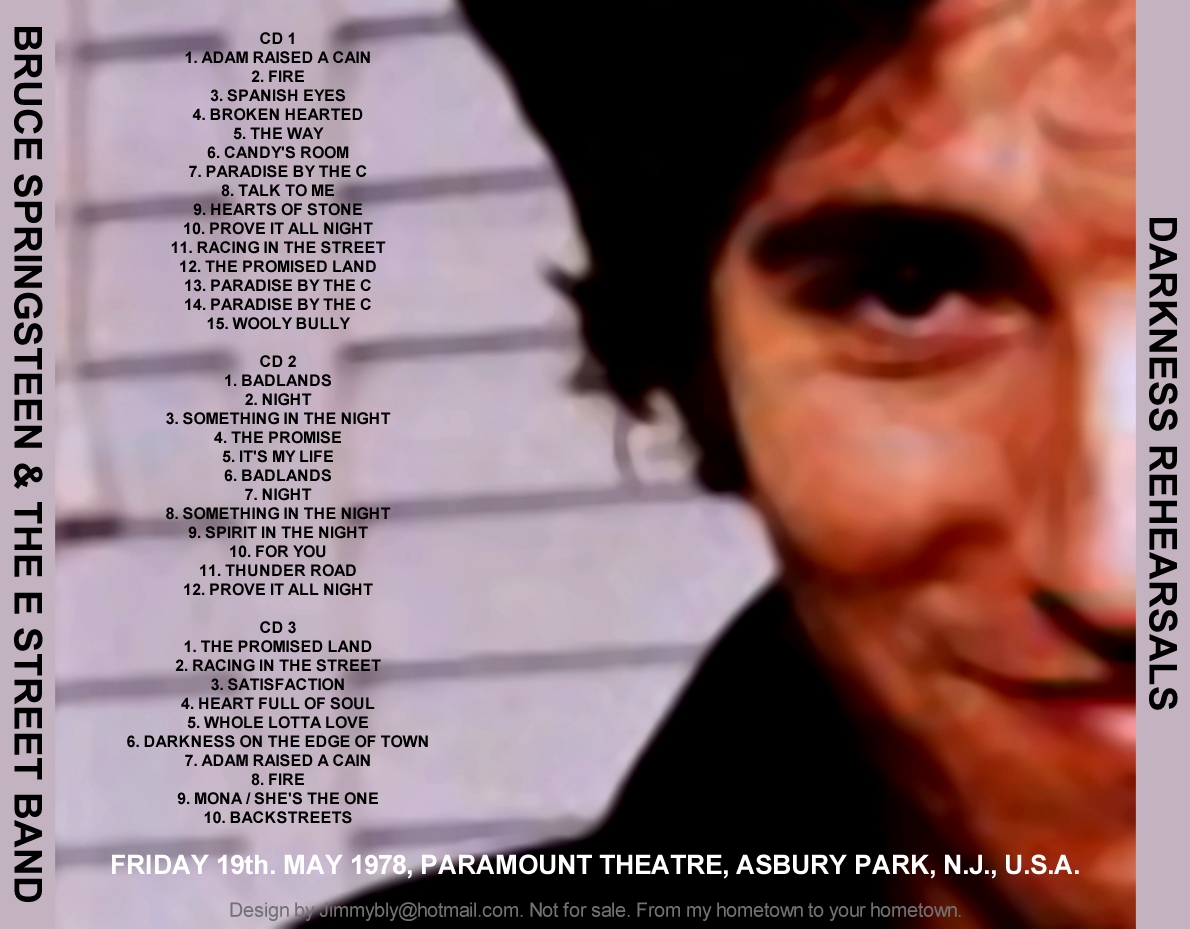
It’s a quiet, depressing affair, with Springsteen fleshing out the raw acoustic heart of the album with atmospheric touches, from a pedal-steel guitar to violin. The smell of death hangs heavy in the air on this, the darkest of his post-“Nebraska” efforts, a haunting collection of character sketches steeped in blood and dignity. Even when the lyrics aren’t so obviously ripped from “Headline News,” the shadow of those fallen towers colors nearly every track. He’s not above wanting “a little revenge” in “Lonesome Day” or an “eye for an eye” in “Empty Sky,” but ultimately, Springsteen’s world view is captured best in “Worlds Apart” and “Let’s Be Friends (Skin to Skin),” in which he turns the other cheek to make nice with those a more simplistic man would write off as the enemy. On “Into the Fire,” a prayer that the courage of those who fell when duty called that day will give us courage, he begins, “The sky was falling and streaked with blood/ I heard you calling me/ Then you disappeared into the dust.” On “Empty Sky,” he wakes up to an empty sky, but there’s blood on the streets, blood flowin’ down and blood of his blood cryin’ from the ground.

This is Springsteen’s response to the tragic events of 9/11, released in mid-2002. On “Magic,” Springsteen sets the tone with the snarling garage-rock of “Radio Nowhere,” following through with an album that often plays out like a love note to the music of his youth, from the wistful chime of “You’ll Be Comin’ Down” to the majestic chamber-pop of “Your Own Worst Enemy.” With the bittersweet “Girls in Their Summer Clothes,” he puts an older, more reflective spin on the old Roy Orbison and Spector girl-group records he’s been drawing on since “Born to Run.” And “Livin’ in the Future” grooves like “Tenth-Avenue Freeze-Out” as Elvis Costello might have played it on “My Aim Is True.” 10. “Born to Run” is amazing, in part, because the sound is undeniable.

And the sound of a record is a bigger deal than anything this side of coming up with decent songs. This is the best-sounding record he’s made since the ’70s. And nearly every track that follows on his hardest-hitting album since “Nebraska” finds him wrestling with those same ideals and harsh realities. “We Take Care of Our Own” is an anthemic state-of-the-union address that finds him wondering when everyone stopped looking out for each other in this broken Promised Land. And very few leftists have spoken more eloquently to the struggles of the 99 percent than Springsteen - regardless of how long it has been since making ends meet was of any real concern in his own life. Rock and roll has always been a leftist’s leftist’s leftist’s world. The title cut could stand with any Springsteen classic, and closing the album with “Pony Boy,” on acoustic guitar, is a nice touch. Despite the presence of the biggest dogs in Springsteen’s catalog - “Real Man” and “57 Channels (And Nothin’ On)” - “Human Touch” is the better release.

Still, it’s not as though he hadn’t found a way to bring the darkness and the light together in the past. “Human Touch” is darker, more adventurous, in many ways more soulful “Lucky Town” more upbeat, lighter, more romantic. Substitute the better songs from “Lucky Town,” released the same day, for the weaker tracks on “Human Touch” and suddenly you’re looking at a perfectly fitting successor to “Tunnel of Love.” But it’s easy enough to find a logic in splitting the songs into separate packages. But I know where I’d rate "The River" – right up there with “Born to Run,” “Nebraska” and my all-time favorite, “Darkness on the Edge of Town.” 13. E Street Band guitarist Nils Lofgren recently told me he found it to be “the first record where the band finally got the sizzle and the electricity of their live performance into the grooves of the record.” And he’s not even on that album.īut how does it rate against the other classic albums in the Springsteen legacy? If you asked 100 Springsteen fans to do a countdown of his finest hours, no two lists would be the same. “The River” is a classic album by a legendary artist.


 0 kommentar(er)
0 kommentar(er)
